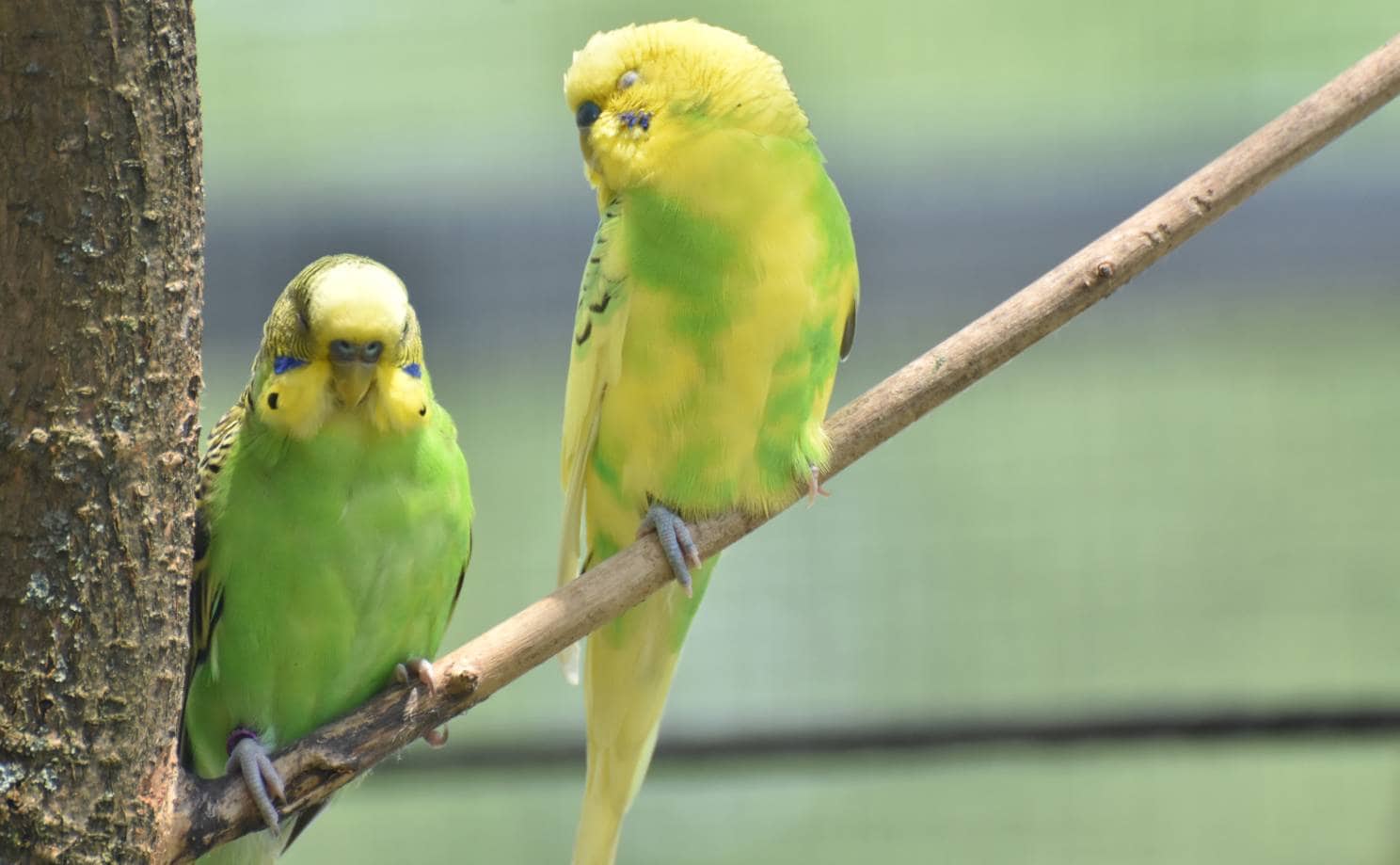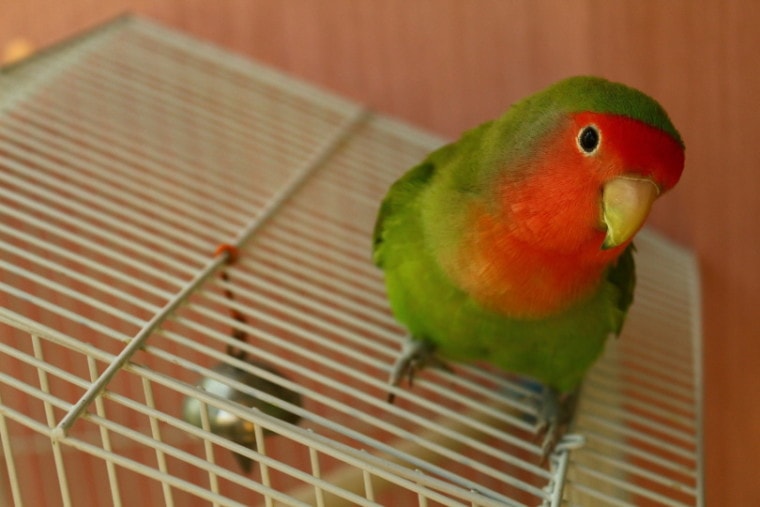
Do you have a pet lovebird? Are you considering getting another bird? The short answer is we don’t recommend housing lovebirds in the same cage with other bird species. In this article, we will discuss the lovebird’s personality, whether they live well with other bird species, and our tips for housing your lovebird with another bird.
What Are Lovebirds?
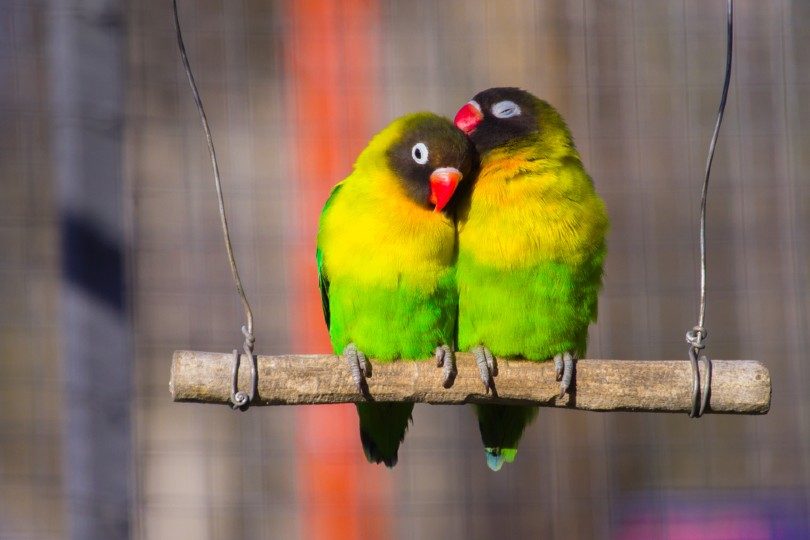
Lovebirds, also known as “pocket parrots”, are small parrots that grow to be no more than 6 inches long. They are popular pets, but it’s important to understand that there are nine different species of lovebird, and only about three of those species are commonly kept as pets. Those three species are rosy-faced or peach-faced lovebirds, black-masked lovebirds, and Fischer’s lovebirds. All three species are native to the southern half of Africa and are frequently found in the pet trade.
Typical Lovebird Personality
As you might expect based on their name, lovebirds are desirable pets because they tend to be social and playful birds that easily form bonds with their owners. However, lovebirds can also have a tendency of becoming aggressive and territorial, especially if they have not been trained from a young age. Females tend to be more prone to aggression than their male counterparts.
Do Lovebirds Get Along With Other Birds?
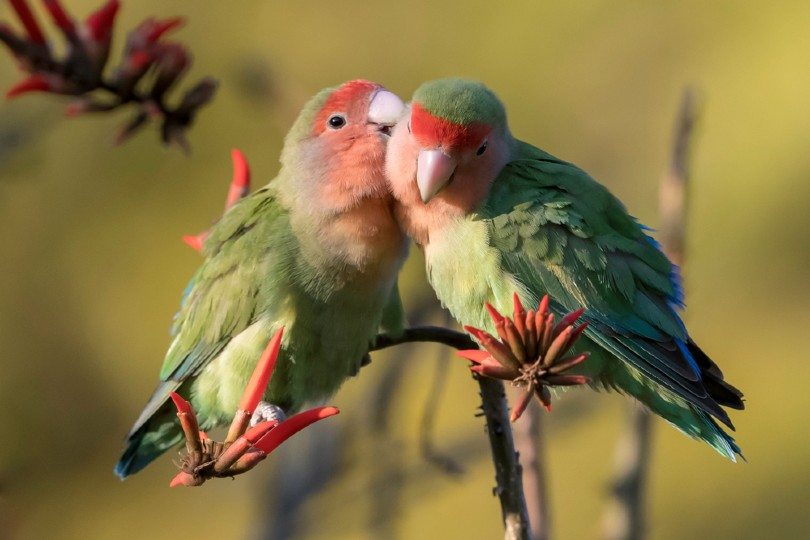
Unfortunately, we don’t recommend housing lovebirds in the same cage as other bird species. This is because lovebirds can be quite mean to other birds, especially small species. You can pair two lovebirds together, though they can still be territorial toward their own kind. One of the best ways to provide your lovebird with companionship is by keeping two or more birds in the same room but in separate cages. They can talk to one another and will likely be curious about one another, but this way, they won’t have the opportunity to harm one another.
If you have the space, providing your bird with a companion can be very beneficial; after all, birds get lonely just like humans do. You probably can’t spend all of your time with your bird, so why not provide a companion who can?
The 3 Tips for Pairing Lovebirds With Other Species
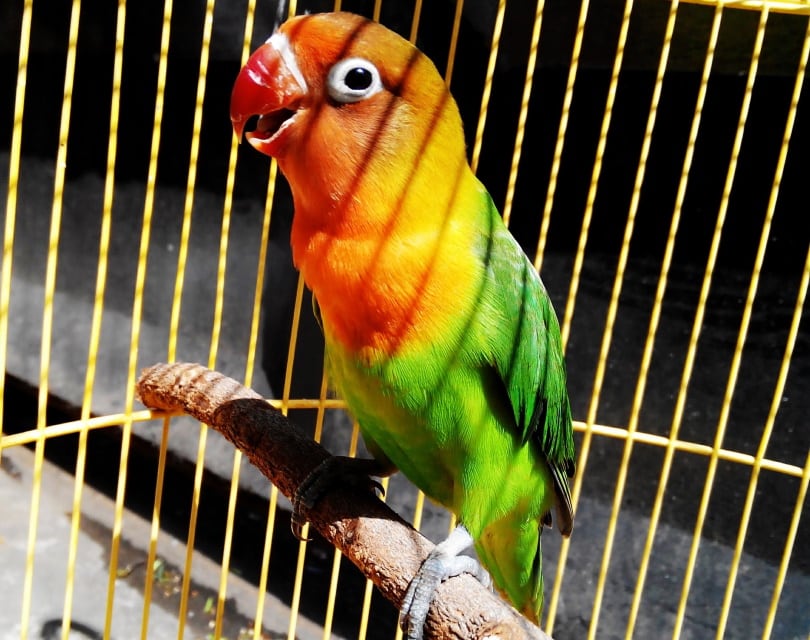
1. House birds of similar size together.
If you are going to house another bird in the same cage as your lovebird, choose a species that is around the same size as your lovebird. Since lovebirds can be aggressive, it’s probably not a great idea to house them with a smaller budgie or parakeet; the smaller bird could easily become injured by the feisty lovebird.
2. Purchase a large enough cage.
If you are going to keep two birds in the same cage, you need to make sure the cage is large enough for both of them to move around. Lovebirds may be small, but they still need space to fly around. For a single lovebird, the cage should be at least 18 inches tall and 18 inches wide. For two birds, the cage needs to be a minimum of two feet tall and two feet wide.
3. Be prepared to keep your birds in separate cages if necessary.
Ultimately, you can’t force your birds to get along any more than you can force two humans to get along. If you find that your birds are not getting along, you need to separate them to avoid injury on either of their parts. Before you buy multiple birds, make sure there is enough space in your home to accommodate two cages in the event that you need to separate your feathered friends.
Summary
In general, it’s not a good idea to house your lovebird in the same cage as another bird. If you do decide to do so, make sure to get a cage that is large enough for both birds to be able to comfortably move around. We recommend that you consider keeping your second bird in a separate cage so that your pets can have both companionship and their own space.
Featured Image Credit: Denis Velicanov, Pixabay







